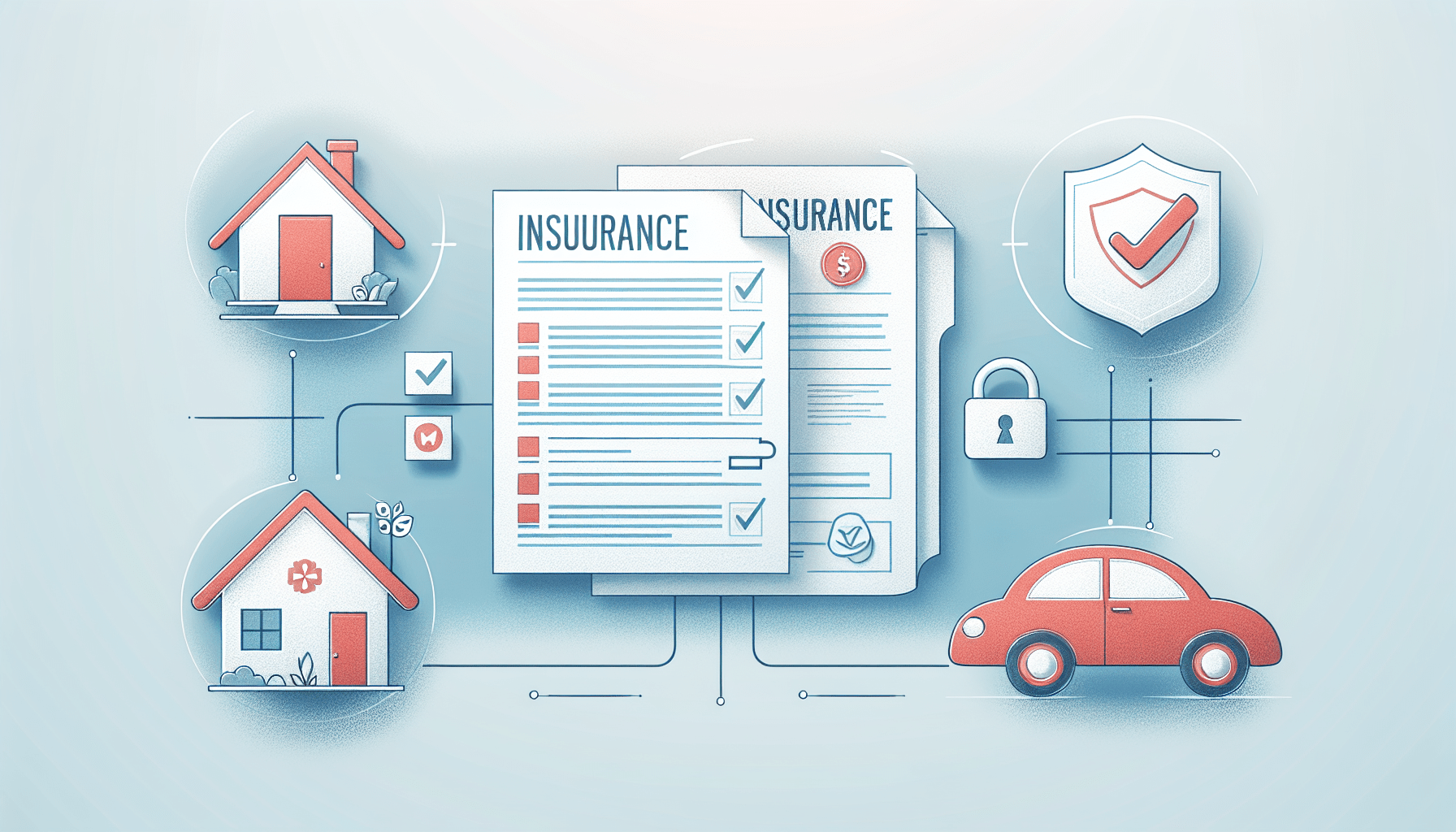Insurance Plans: Low Cost, High Risk? The Truth About 2025

Insurance Plans: Is Cheap Insurance a Trap in 2025?
In 2025, affordable insurance plans continue to attract attention, providing consumers with savings and immediate benefits.
Low-cost premiums and affordable policies might look appealing, but they often have limitations that could surprise you. It’s crucial to assess if these budget options provide real value or risk leaving you with inadequate coverage and hidden expenses down the road.
Picture this: you save on car insurance only to discover it won’t cover your accident. Or you opt for a cheap health plan that refuses to approve a life-saving surgery. In 2025, a surge of low-cost insurance plans is sweeping the market, offering affordability, but are they compromising your protection?
Insurance plans: With rising demand for affordable insurance, the market offers many budget-friendly options. However, these plans often include limited coverage and high deductibles, which could leave policyholders at risk during emergencies.
It’s a precarious balancing act between managing monthly expenses and ensuring adequate protection, compelling consumers to scrutinize the fine print with unprecedented vigilance.
Low-cost, high-risk is a key issue for 2025. As inflation rises and the economy wavers, more consumers seek cheaper options. However, hidden exclusions, coverage gaps, and cost-cutting by insurers may put millions at risk. This article explores the trade-offs, trends, and tips to navigate this challenging landscape.
Why Low-Cost Insurance Plans Are Booming in 2025

With the rising cost of living, more consumers are focusing on affordable insurance options. In response, providers are introducing low-cost plans to appeal to budget-conscious buyers. However, these cheaper policies often come with minimal coverage, offering only protection.
This leaves policyholders at risk of being underinsured, facing significant out-of-pocket expenses when they need to make a claim. It’s a precarious balancing act between immediate financial relief and long-term security, and many are unaware of the potential pitfalls until it’s too late.
The global insurance market is expected to reach $7.5 trillion by 2025 (Forbes). With rising living costs, 68% of consumers now value affordability over comprehensive coverage (Statista). Insurers are adapting by offering basic plans:
1: “Micro-insurance”: Micro-insurance provides affordable coverage for low-income individuals and families, addressing the gaps often left by traditional insurance models.
These bite-sized policies cover specific risks, such as crop failure or health emergencies, ensuring that even the most financially vulnerable can access some protection.
AI-driven personalization helps insurers analyze large datasets to create accurate risk profiles and provide tailored, low-cost micro-insurance plans. These policies target specific risks, such as dengue fever or flat tire fixes.
2: AI-Driven Pricing: AI-powered pricing models use machine learning to adjust insurance premiums dynamically based on various factors. By analyzing real-time data like lifestyle habits, driving behavior, or health metrics, AI creates personalized pricing that reflects an individual’s unique circumstances.
This helps consumers by offering affordable choices and enables insurers to handle risks better and adapt quickly to market shifts. However, algorithms may quietly exclude high-risk groups.
3: Pay-as-you-go models: Pay-as-you-go models are changing how customers use insurance services by providing more flexibility. These models match insurance costs to actual usage, letting consumers pay only for the coverage they need, when they need it.
This approach promotes billing and encourages smart usage, which can help lower costs for insurers and customers. It’s attractive to gig workers but provides only occasional coverage.
Case Study: In the context of AI personalization, the case study in question illuminates the transformative power of machine learning algorithms in tailoring insurance products to individual needs. By analyzing vast datasets, AI can predict usage patterns and risk profiles with remarkable accuracy, enabling insurers to offer bespoke coverage plans.
This enhances customer satisfaction by providing coverage that aligns with their unique lifestyle but also streamlines the insurer’s risk assessment process, leading to more efficient operations and competitive pricing.
HealthShare Ministries, a low-cost alternative to traditional health insurance, saw membership triple since 2020. However, the Consumer Financial Protection Bureau reports a 200% rise in complaints about claim denials.
Section 2: Hidden Risks of Low-Cost Insurance Plans

Myth vs. Reality:
🔍 Myth 1: “All insurance regulators enforce strict standards.”
Reality: Insurance regulators aim to protect consumers, but enforcement and regulation strictness differ widely depending on the region.
Consumers may find that some low-cost insurance plans can circumvent stringent requirements, potentially leaving policyholders with inadequate coverage when they need it the most.
This disparity in regulatory oversight can lead to situations where individuals are enticed by lower premiums, only to discover that their policy falls short in the event of a claim, leading to the aforementioned surge in complaints and dissatisfaction.
Many budget plans operate in regulatory gray areas. For example, short-term health plans in the U.S. bypass ACA requirements, denying coverage for pre-existing conditions.
🔍 Myth 2: “Low cost equals sufficient coverage.”
Reality: Unfortunately, this myth perpetuates a dangerous misconception that can lead to catastrophic financial strain. Just because a health plan is labeled as “affordable” does not guarantee that it will cover all necessary medical expenses, particularly in the event of a serious illness or accident.
Consumers should carefully review the details of these budget plans, as they often have high deductibles, limited essential benefits, and high out-of-pocket costs that can leave them without enough coverage when it matters most.
A 2024 JAMA study found that 41% of low-cost health plan users faced unexpected out-of-pocket costs exceeding $5,000.
Debunking 3 Myths About Low-Cost Insurance
- “Cheaper premiums mean smarter savings.”
- Truth: Lower premiums might seem appealing, but they usually come with higher deductibles and out-of-pocket costs. This means you’ll pay less each month but could face higher expenses when you need medical care, especially during emergencies or for chronic conditions.
- Over time, individuals may move to healthcare with lower-premium plans that offer limited coverage. When evaluating budget-friendly insurance options, it’s crucial to consider all potential healthcare expenses. Plans with cheaper premiums often come with higher deductibles and copays.
- “All insurers prioritize customer care.”
- Truth: Not all insurers prioritize customer care equally. The quality of service varies significantly and often depends on how much each company invests in its support teams.
- AI personalization is growing, with some insurers using it to improve customer interactions by providing tailored support and faster solutions. However, it’s not yet common across the industry. A 2023 NAIC report found budget insurers spend 60% less on processing claims.
- “Young, healthy people don’t need robust plans.”
- Truth: This common misconception overlooks the unpredictability of life and the importance of being prepared for unforeseen medical issues. Even individuals who are young and in good health can face unexpected accidents or illnesses that can incur significant medical costs.
- Comprehensive insurance plans offer peace of mind and financial protection, ensuring that a sudden health issue doesn’t become a devastating burden.
- Consumers should weigh the risks and choose insurance that offers enough protection, no matter their health condition. Accidents and chronic illnesses can happen unexpectedly. According to the Kaiser Family Foundation, 1 in 4 millennials experience medical bankruptcy.
Key Trends Shaping Insurance in 2025
- AI-Powered Underwriting:
- AI-powered underwriting is revolutionizing the insurance industry by leveraging machine learning algorithms to assess risk more accurately and efficiently.
- This technology enables insurers to process vast amounts of data, including past claims and real-time health information, to tailor policies that reflect an individual’s unique risk profile.
- As a result, customers can benefit from more personalized premiums, insurers can manage their risk pools with greater precision, ultimately leading to a more sustainable business model in the face of evolving market demands.
- Algorithms use social media and wearable data to adjust premiums. Critics argue this penalizes low-income groups (Brookings Institution).
- Parametric Insurance:
- Parametric insurance offers a modern alternative to traditional insurance by giving policyholders a set payout when a specific event, like a natural disaster, happens.
- This approach uses data and algorithms to define parameters and automate payouts, reducing the need for long claims processes and subjective loss evaluations.
- By leveraging AI to analyze vast datasets, insurers can more accurately predict risks and tailor coverage to individual needs, concerns about transparency and the potential for algorithmic bias remain areas for industry scrutiny and improvement. Payouts are triggered by predefined events (e.g., hurricanes) rather than claims. Faster but less customizable.
- Telematics in Auto Insurance:
- In auto insurance, telematics has emerged as a game-changing technology that personalizes premiums based on actual driving behavior. By utilizing data such as speed, braking patterns, and driving times, insurers can tailor rates more precisely, rewarding safe drivers with lower premiums while identifying high-risk behaviors that may necessitate higher charges.
- This incentivizes better driving habits, allows for a more equitable approach, aligning costs more closely with the individual’s driving record rather than relying on broad demographic factors. Progressive’s Snapshot program rewards safe driving but raises privacy concerns.
Expert Quote:
“The future of insurance is personalization—but without guardrails, it becomes discrimination.”
—Sarah Doe, InsurTech Analyst at MIT.

Top 3 Google Searches About Low-Cost Insurance (2025)
- “Are low-cost health plans worth it?”
- Quick Answer: AI-driven personalization insurance, offering tailored policies to match individual needs. However, balancing customization with ethical data use is a key challenge.
- Sarah Doe highlights that AI can greatly simplify services and reduce expenses, but the industry must carefully avoid using sensitive data in ways that lead to unfair practices. Ensure you’re prepared with emergency savings, are in good health, and review coverage limits.
- “How to dispute a denied insurance claim?”
- Quick Answer: Navigating the complex waters of insurance claims can feel daunting, but being equipped with the right knowledge can turn the tide in your favor.
- Start by meticulously reviewing your policy to understand the grounds of your claim denial. Armed with this information, you can craft a well-structured appeal, providing additional evidence and clarification to support your case.
- Remember, persistence and clear communication are your allies in disputing a denied insurance claim. Document everything, appeal in writing, and contact your state’s insurance commissioner.
- “Best low-cost life insurance for seniors?”
- Quick Answer: I apologize for the confusion; there might be a mix-up in the provided text. The snippet you’ve shared appears to be about disputing a denied insurance claim and then abruptly shifts to a question about low-cost life insurance for seniors.
- To maintain coherence and stay on the topic of AI personalization, I would need more context or the correct preceding content. However, I can craft a paragraph on AI personalization in the context of insurance for seniors if that would be helpful:
- AI is changing the insurance industry, helping seniors find affordable life insurance. With advanced technology, insurers can design policies tailored to the health and lifestyles of older adults.
- This helps seniors avoid paying for unnecessary coverage and simplifies the application process. AI analyzes data quickly to find the best policy options. Guaranteed-issue policies, like AARP, come with high premiums and low payouts.
How to Choose a Safe, Affordable Plan
1: Audit Your Risks: Review Your Coverage Needs: After assessing your risks, determine the coverage you need. Think about your current health, possible future health concerns, and financial status.
This will help you determine whether you need a comprehensive plan with higher premiums but more extensive coverage, or if a more basic plan with lower premiums and lower coverage limits will suffice.
Remember, the goal is to balance affordability with the peace of mind from knowing you’re adequately protected. List potential financial threats (health, auto, income loss).
2: Compare Apples to Apples: When evaluating insurance options, it’s crucial to ensure you’re making direct comparisons. Look at the deductibles, coverage limits, and exclusions across different plans. This will help you understand the value of each policy and prevent any surprises when you need to make a claim.
You can select an insurance policy tailored to your needs and budget. Utilize platforms like PolicyGenius or Insurify to explore and compare your options.
3: Check Insurer Ratings: Use AI Recommendations: AI has revolutionized insurance by providing tailored policy suggestions. These systems review your details, preferences, and risk factors to recommend the best options for you.
By leveraging AI personalization, you can ensure that the policies presented to you are tailored to your unique situation, making the decision-making process more efficient and effective. AM Best and JD Power rate financial stability and customer service.
4: Consult a Broker: Consulting a broker can significantly enhance your insurance purchasing experience. Brokers are industry experts who understand the nuances of various insurance products and can navigate the complex landscape on your behalf.
They serve as intermediaries between you and insurance providers, often offering access to better rates and exclusive policies that might not be available directly to consumers.
Brokers leverage their expertise and advanced AI tools to create customized plans that align with your needs, ensuring affordable and suitable coverage. Fiduciary brokers, such as members of NAPFA, prioritize your best interests over earning commissions.
Pro Tip:
“If a plan excludes ‘named perils,’ run. Opt for ‘all-risk’ policies instead.”
—John Smith, CFP®
5 Essential Tips for Smart Insurance Shopping

1: Never Skip the Fine Print: Understanding the details of your policy can save you from unexpected denials when you need coverage the most. The fine print often includes clauses about coverage limits, deductibles, and exclusions that can significantly affect your claim.
Take the time to review these sections with a professional, or at the very least, ensure you’re clear on the terms and conditions to avoid any unpleasant surprises down the line. Exclusions hide in definitions (e.g., “accident” vs “negligence”).
2: Bundle Wisely: Know Your Coverage Limits: Make sure you understand the maximum amount your insurance will cover for various claims. This includes personal property, liability, and living expenses—each has a set limit.
By familiarizing yourself with these figures, you can assess whether you have sufficient coverage for your needs or if you should consider purchasing additional coverage to bridge any gaps. Combining auto and home insurance can save 20% (Insurance Information Institute).
3: Use Group Plans: Group plans can help you save money on insurance by offering lower rates than individual policies. Joining a plan through your job, a professional group, or a membership organization gives you access to these cost-effective options.
It’s also a convenient way to manage your insurance, as group plans often come with streamlined billing and simplified administration, making it easier to keep track of your coverage and payments. Professional associations or alumni groups offer better rates.
4: Annual Review: Insurance policies can change rapidly, so it’s important to review your coverage annually. This helps ensure your policy aligns with any changes in your life.
By regularly reviewing your policy, you can make informed decisions about adjusting coverage levels, adding new protections, or even shopping around for more competitive rates.
Being proactive with your insurance plan ensures you’re always covered. Life events like marriage or buying a home can affect your coverage needs.
5: Build an Emergency Fund: An emergency fund for your finances. It helps cover unexpected costs like medical bills, home repairs, or job loss.
Saving a portion of your income regularly creates a financial safety net, helping you avoid dipping into long-term savings or retirement funds and securing your financial future.
Financial advisors suggest saving enough to cover 3–6 months of living expenses. This helps you stay prepared for unexpected challenges and manage high deductibles.
The Future of Insurance: Opportunities and Threats

Opportunities:
1: Climate Insurance: Climate change brings major risks to homes and jobs, but it also opens doors for new insurance solutions. Insurers can create climate insurance plans to cover damages from extreme weather like floods, hurricanes, and wildfires.
This helps policyholders recover faster from disasters and encourages climate-resilient practices, which may lower the frequency and impact of future claims. Parametric policies for floods and wildfires can help reduce climate risks (World Bank).
2: Cyber Insurance: Health Insurance: AI personalization in health insurance offers a dual advantage: enhancing patient care while optimizing cost management. By analyzing vast datasets, AI can identify patterns that predict health risks and outcomes, allowing insurers to tailor coverage and premiums more accurately to individual needs.
Moreover, AI-driven systems can streamline claims processing, reduce fraudulent claims, and facilitate proactive healthcare measures, ultimately leading to healthier lifestyles and potentially lowering insurance costs.
This customization gives insured individuals better coverage options while helping insurers work more efficiently in a competitive market. With ransomware attacks up 300% since 2020, demand (Forrester).
Threats:
1: AI Bias: AI personalization, while innovative, is not without its challenges. One of the most significant threats it poses is the potential for AI bias. This occurs when the algorithms driving personalized experiences are based on skewed data sets or prejudiced decision-making processes, leading to discriminatory outcomes.
For instance, if an insurance AI system is trained on historical data that contains biases, it may offer less favorable terms or higher premiums to certain demographics.
Therefore, developers and insurers must work to reduce biases by using diverse data and regularly monitoring AI decisions. Without these efforts, marginalized groups could face higher premiums due to biased data (Harvard Law Review).
2: Overreliance on Tech: As AI continues to evolve, there’s a growing concern that an overreliance on technology could lead to a lack of human oversight, essential for nuanced decision-making. The complexity of insurance underwriting and claim assessments often requires a level of empathy and understanding that AI, at least for now, cannot fully replicate.
This potential detachment from the human element could result in impersonal and sometimes inappropriate policy recommendations, which may not always align with the best interests of the insured individuals.
Therefore, the insurance industry must maintain a balanced approach, leveraging AI for efficiency while ensuring that experienced professionals remain integral to the decision-making process. Chatbots failing to explain complex policies worsen consumer trust.

FAQs: Your Burning Questions Answered
- Q: Can I trust online insurance comparison tools?
- A: Online insurance comparison tools are generally reliable if they come from trusted sources. They use advanced algorithms to review your details and preferences, offering policies that fit your needs.
- However, it’s essential to remember that they may not cover every insurer or policy available, and it’s always prudent to perform additional research or consult with an insurance expert for a comprehensive understanding of your options. Yes, but cross-check with insurer websites. Some tools prioritize partner commissions.
- Q: Are short-term health plans ever a good idea?
- A: Short-term health plans are a good option for people in transition, such as those between jobs or waiting for new job benefits.
- However, these plans typically offer less coverage than standard health insurance policies and may not cover pre-existing conditions or essential health benefits.
- It’s essential to carefully review the terms and limitations of a short-term plan to ensure it aligns with your healthcare needs and to prevent unexpected out-of-pocket expenses. For temporary gaps (e.g., job transitions). Avoid for chronic conditions.
- Q: How do I spot a fraudulent insurance company?
- A: To identify a fake insurance company, if the company is licensed with your state’s insurance department. Legitimate insurers must have a valid license to operate in each state.
- Be cautious of unsolicited offers or those pushing for quick decisions. Trustworthy companies usually give you enough time to review policy details.
- Always check for customer reviews and complaints through the Better Business Bureau or similar consumer protection agencies, which can offer insights into the insurer’s credibility and history of customer satisfaction. Verify licensure via your state’s DOI website and avoid unsolicited offers.
- Q: Will climate change make insurance unaffordable?
- A: Climate change presents significant challenges to the insurance industry, potentially leading to increased premiums and coverage restrictions, especially in high-risk areas prone to extreme weather events. Insurers use more sophisticated risk models and adjust their pricing structures to reflect the heightened risks.
- However, this could indeed make insurance less affordable for many, particularly those in vulnerable communities, and may necessitate policymakers to ensure that essential coverage remains accessible. In high-risk areas (e.g., Florida), premiums may rise 25% by 2030 (NOAA).
- Q: What’s the #1 mistake people make with insurance?
- A: The number one mistake people often make with insurance is underestimating the coverage they need. Many individuals opt for the lowest possible premiums, overlooking the potential for out-of-pocket expenses when disaster strikes.
- This shortsighted approach can lead to significant financial hardship, as the insurance they’ve paid for may not adequately cover the costs of rebuilding, repairing, or replacing what’s been lost due to unforeseen events.
- Assessing risks and choosing a policy with comprehensive coverage is crucial. Cutting costs by underinsuring may lead to significant financial challenges following an unforeseen event.

Conclusion: Balancing Cost and Risk in 2025
As the decade advances, balancing cost and risk will become increasingly complex. By 2025, the insurance industry is anticipated to rely extensively on advanced AI algorithms to accurately predict risks, paving the way for highly personalized policies.
Consumers should stay alert and keep up with new insurance technology to ensure they get affordable coverage and protection that fits their changing needs.
Affordable insurance plans can be a good option, but they don’t work for everyone. In 2025, making choices means reading the details, understanding tech-related risks, and managing potential issues upfront.
Call to Action:
To navigate this complex landscape, consumers must leverage the power of AI personalization. By harnessing sophisticated algorithms that analyze individual risk profiles and lifestyle patterns, insurance companies can offer tailor-made policies that align perfectly with each customer’s unique circumstances.
This bespoke approach ensures comprehensive coverage, avoids the financial strain of over-insurance, striking the ideal balance between cost and protection.
Audit your insurance coverage today. Share this article to help others avoid costly mistakes, and join the discussion: “Would you prioritize low premiums or comprehensive coverage in 2025?”

